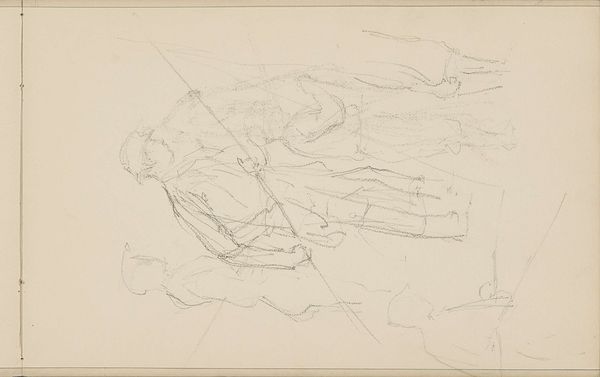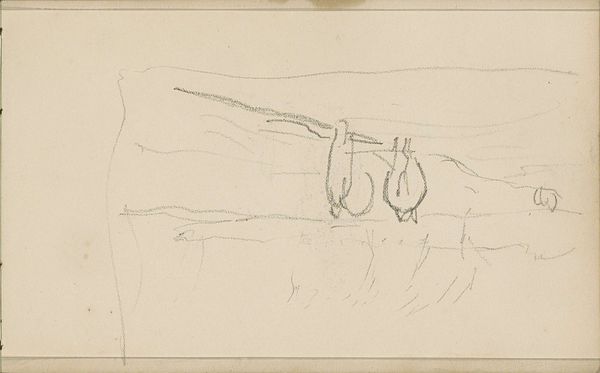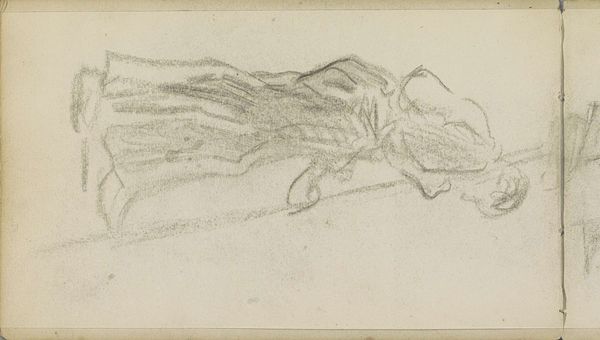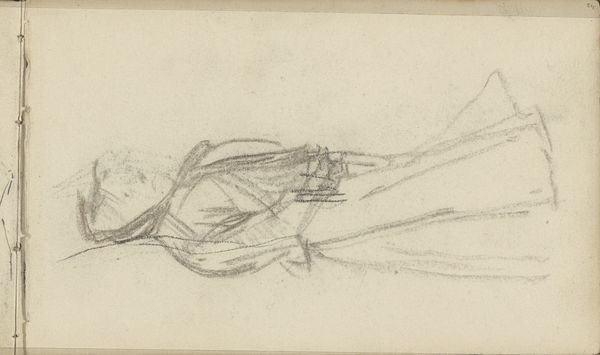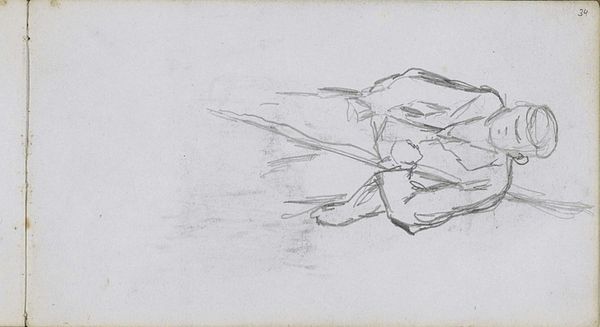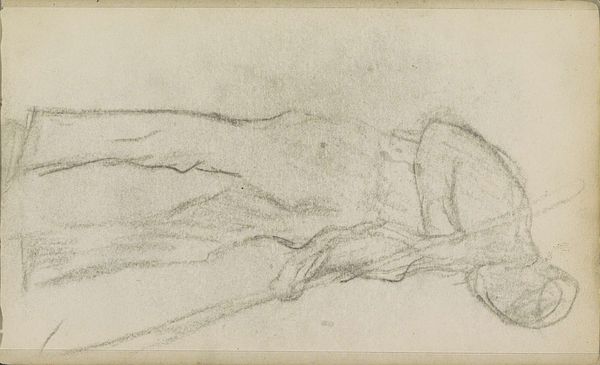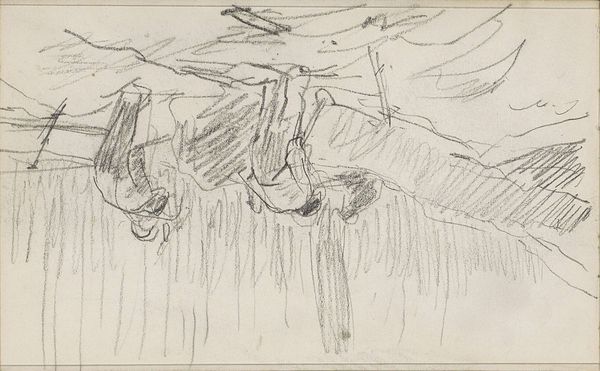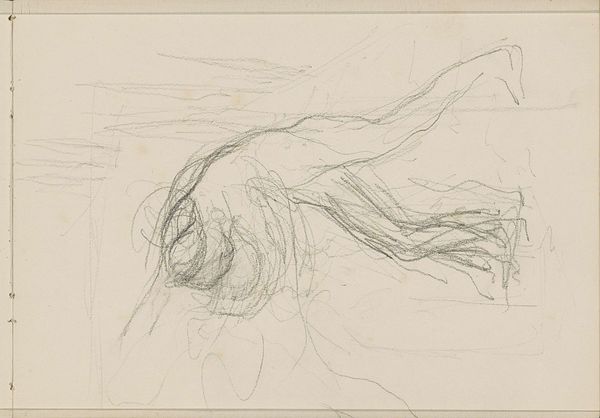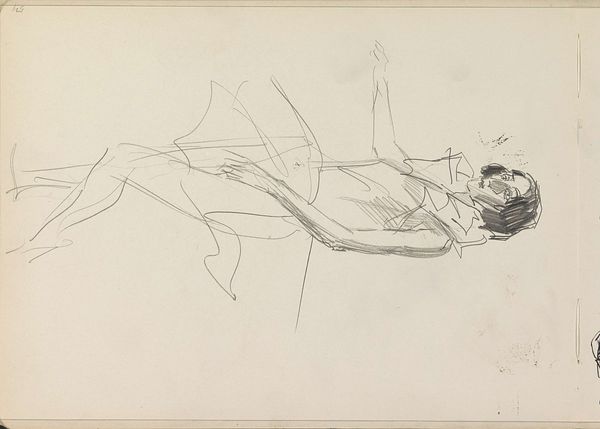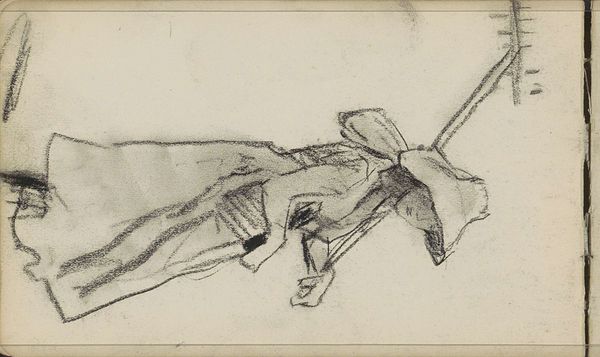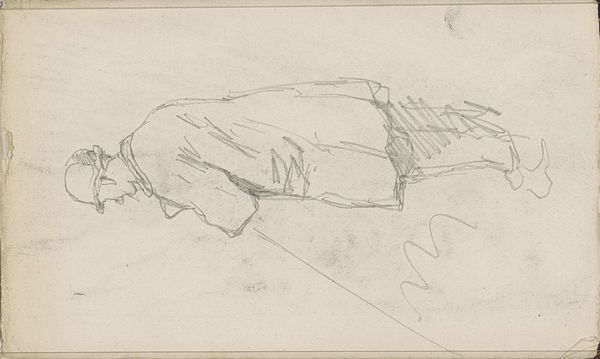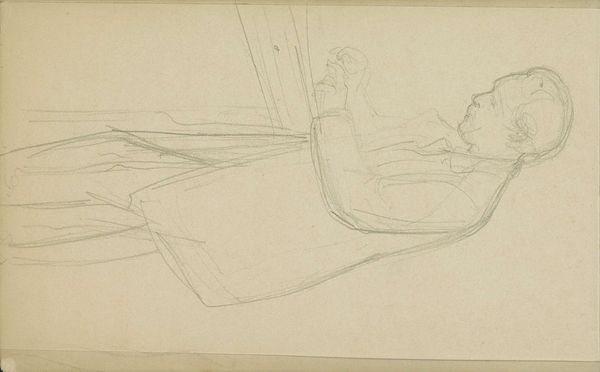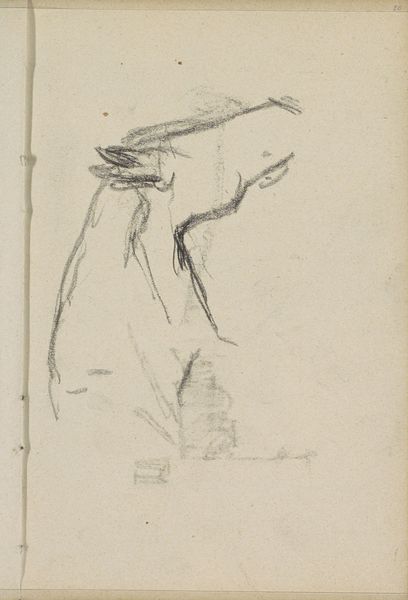
drawing, pencil
#
portrait
#
drawing
#
amateur sketch
#
light pencil work
#
pencil sketch
#
incomplete sketchy
#
figuration
#
personal sketchbook
#
idea generation sketch
#
ink drawing experimentation
#
pen-ink sketch
#
pencil
#
pencil work
#
academic-art
#
realism
#
initial sketch
Copyright: Rijks Museum: Open Domain
Curator: This unassuming pencil sketch from the collection of the Rijksmuseum, titled "Man met een stok of vishengel in de hand," which translates to "Man with a stick or fishing rod in his hand", likely comes from somewhere between 1865 and 1913. The artist is unknown, but this fleeting impression of a figure tells us a lot about seeing and being seen. Editor: Immediately, I'm struck by how ephemeral it feels. It's barely there, like a half-remembered dream. And the title feels similarly tentative; he might be fishing, he might just be holding a stick, who can say? There’s an honesty there, though, a refusal to overstate. Curator: The ambiguity is so rich! The stick or rod pierces through the image, literally dividing it. Perhaps that uncertainty about the man’s activity is the point. It draws us into considering what labor and leisure meant at this time. The pole is almost like a vertical, iconic staff that denotes dignity in simplicity. Editor: I think that’s key. There’s something deeply archetypal here. Consider how rods and staffs are recurring motifs throughout mythology and folklore—symbols of power, guidance, and transition. Could this be about more than just fishing or idle wandering? Perhaps it’s about finding your place, feeling the ground under your feet. Curator: It’s compelling to think of it as less a portrait and more a distillation of a state of mind, even one familiar to our own. Look at how the pencil work, though delicate, uses slight tonal variation, that almost ghostlike doubling of lines gives the figure weight, making him somehow more substantial despite the incompleteness of the piece. It’s the difference between rendering a subject and evoking it. Editor: Absolutely. The very rawness of the technique pulls us in. It feels unmediated, authentic, straight from the artist's mind onto paper. It invites us to complete the picture, to participate in the act of creation itself. The man might be incomplete on paper, but it serves to represent every man in some capacity. Curator: In its simplicity, I think the sketch becomes a vessel for all sorts of reflections on our own transitory place in the world, the inherent, incomplete nature of being. Editor: Agreed. It reminds us that we, too, are sketches in progress, still being defined by our actions and aspirations, not necessarily by our labels or what someone might see when looking at us. It is so much about human potential.
Comments
No comments
Be the first to comment and join the conversation on the ultimate creative platform.
